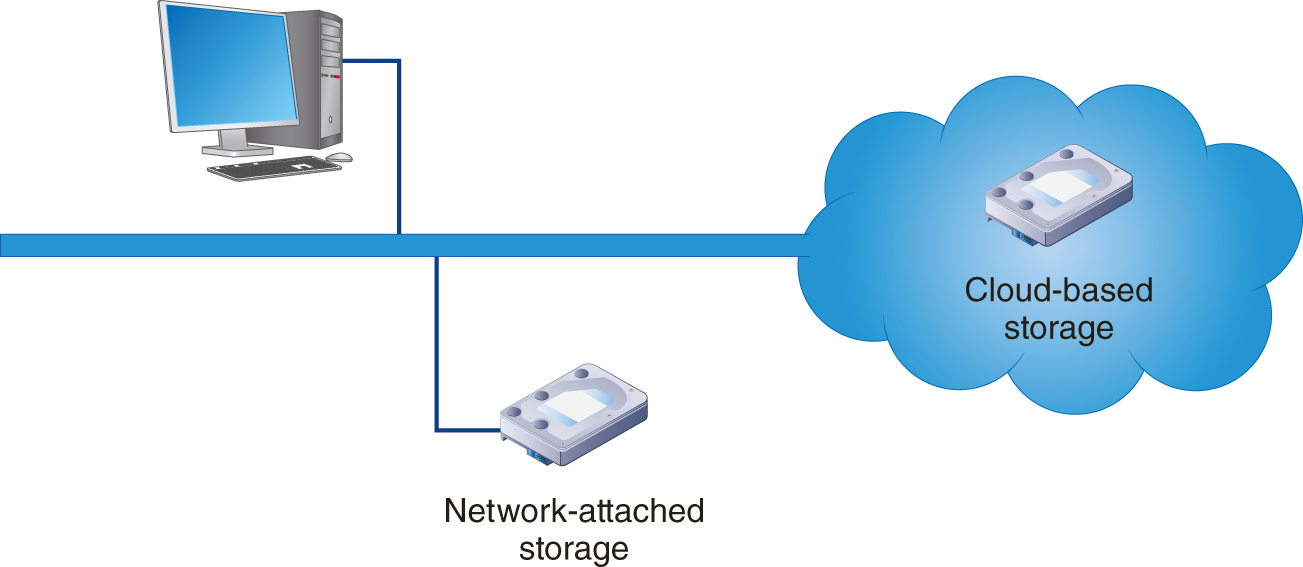Data Storage Virtualization
Chapter 6, “Data Storage in the Cloud,” discussed cloud-based data storage in detail. You learned that cloud-based data storage has the following advantages:
-
Scalable disk-storage space on demand
-
The ability to “pay as you go” for the storage needed
-
Behind-the-scenes backup and data replication
-
Support for common operating systems
-
Access from anywhere, anytime, and essentially any device
-
Ease of document sharing
Cloud-based storage has the following primary disadvantages:
-
Some users are not comfortable with their data residing in the cloud.
-
Cloud-based file access is slower than local-file access due to network overhead.
Data-storage virtualization essentially separates the physical-data storage from the logical presentation that users (and applications) use to access the device. For example, users will often partition a large (physical) hard drive into two more logical drives (often drives C and D).
The process of making a device available to a user or application is called mounting the device. Several cloud-based data-storage provider allow users to mount the virtual storage so that the user can refer to the storage area using a familiar disk-drive letter.
Again, as shown in FIGURE 8-14, the data-storage virtualization hides the physical details of the actual storage device, which makes it very easy for administrators to scale the available storage space.

FIGURE 8-14 Data-storage virtualization hides the physical-storage device or devices from the logical presentation that users or applications use to access the space.
